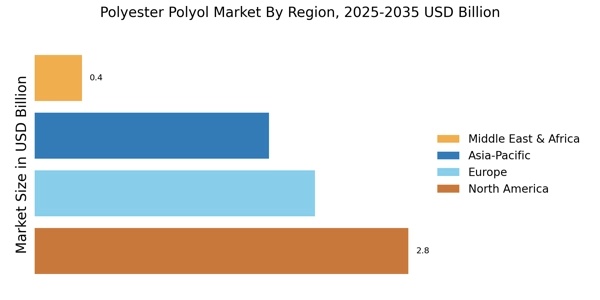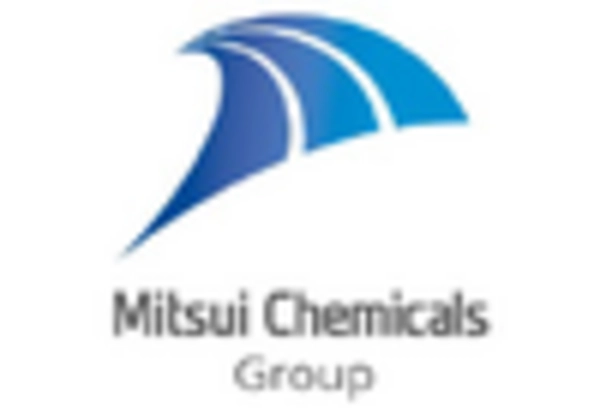Technological Innovations
Technological advancements are significantly influencing the Polyester Polyol Market, as innovations in production processes and formulations lead to enhanced product performance. The development of new catalysts and processing techniques allows for the creation of polyester polyols with improved properties, such as higher thermal stability and better mechanical strength. These innovations not only expand the application range of polyester polyols but also enable manufacturers to meet the evolving demands of various industries. As research and development continue to progress, the market is likely to witness the introduction of novel polyester polyol formulations that cater to specific application needs.
Sustainability Initiatives
The increasing emphasis on sustainability within the Polyester Polyol Market is driving demand for eco-friendly products. Manufacturers are increasingly adopting bio-based polyester polyols, which are derived from renewable resources. This shift not only aligns with global environmental goals but also caters to consumer preferences for sustainable materials. As a result, the market for bio-based polyester polyols is projected to grow significantly, with estimates suggesting a compound annual growth rate of over 10% in the coming years. This trend reflects a broader movement towards reducing carbon footprints and enhancing the recyclability of products, thereby influencing purchasing decisions across various sectors.
Increasing Consumer Awareness
Consumer awareness regarding the benefits of polyester polyols is on the rise, contributing to the growth of the Polyester Polyol Market. As end-users become more informed about the advantages of using polyester polyols in various applications, including furniture, automotive, and construction, the demand for these materials is expected to increase. This heightened awareness is often linked to the growing trend of customization, where consumers seek tailored solutions that meet their specific needs. Consequently, manufacturers are responding by developing specialized polyester polyol products that cater to diverse consumer preferences, thereby driving market expansion.
Rising Demand in Automotive Sector
The automotive sector is a key driver for the Polyester Polyol Market, as manufacturers increasingly utilize polyester polyols in the production of flexible and rigid polyurethane foams. These foams are essential for vehicle interiors, providing comfort and insulation. The automotive industry is projected to witness a steady growth rate, with polyester polyols playing a crucial role in meeting the demand for lightweight and energy-efficient materials. The integration of polyester polyols in automotive applications not only enhances performance but also contributes to overall vehicle efficiency, which is becoming increasingly important in the context of stringent emissions regulations.
Growth in Construction Applications
The construction industry is experiencing a notable surge in the use of polyester polyols, particularly in the production of insulation materials and coatings. The Polyester Polyol Market benefits from this trend, as polyester polyols are integral to creating high-performance polyurethane systems that offer superior thermal insulation properties. With the construction sector projected to expand, driven by urbanization and infrastructure development, the demand for polyester polyols is expected to rise correspondingly. This growth is further supported by the increasing focus on energy-efficient building solutions, which necessitate the use of advanced materials that enhance energy conservation.


















Leave a Comment